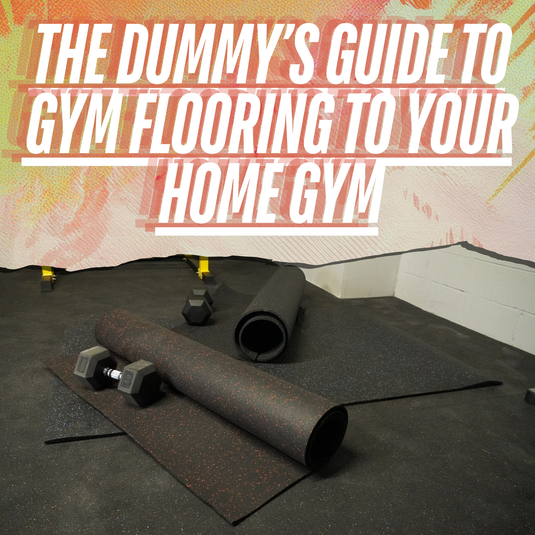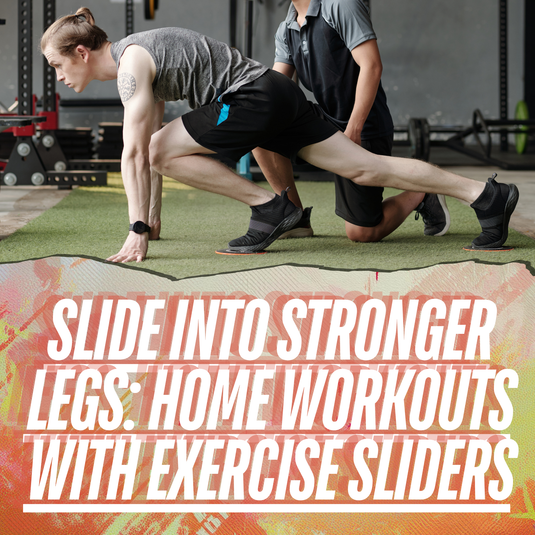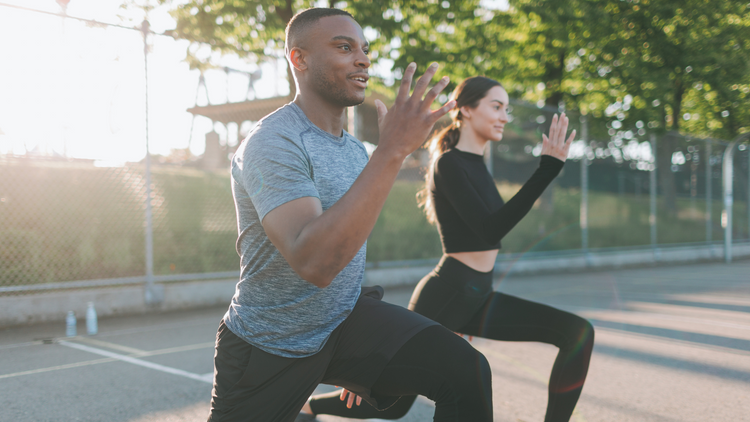Proper Barbell Technique for Better Deadlifts

⏱️ Estimated Read Time: 6 minutes
🧠 TL;DR
- Proper Barbell Technique for Better Deadlifts offers effective, accessible movements for targeted results.
- This guide is designed to help you move smarter, build strength, and stay consistent.
✍️ Summary
This post explores proper barbell technique for better deadlifts in a way that’s actionable and easy to follow. Whether you're new to this style of training or leveling up, it includes practical takeaways for your routine.
📚 Table of Contents
The barbell deadlift is one of the pinnacle compound exercises in strength training. Alongside the bench press and barbell squat, it is considered part of a triple threat in powerlifting and serves as a marker of maximal strength. The exercise requires activation and power across the entire human movement system, making it a staple amongst the individual programs of the casual gym-goer and the world's elite athletes. However, it is essential to understand the merits of the barbell deadlift, how to perform it safely, and when it is the right option for your personal workout program.
The Deadlift Exercise
The deadlift entails lifting a barbell from the ground up to the mid-thigh, extending knees and hips, and finishing with a contraction of the glutes and tuck of the pelvis. This exercise can measure maximal loading when training at a higher intensity of 5 repetitions or lower (Ronai,2020). Although variations of the deadlift, like the kettlebell, hex bar, Romanian, and sumo stance, each requires a combination of power and stability from the ankles, knees, and hips and a rigid brace of the spine in a neutral position. The movement pattern associated with the deadlift is the hip hinge, which involves stability and mobility mentioned above.
Importance of Proper Technique
Improper technique on the deadlift can lead to stress on the lumbar spine, which can cause numerous injuries involving the lower back. Recent studies have suggested that improper technique combined with a heavy load is closely related to injury (Bengtsson et al., 2018). Becoming injured by improper deadlift technique can cause an individual to take a break from exercise and other types of activity, possibly slowing down or ceasing progress altogether. Adherence to proper bracing and mindfulness towards loading limitations is essential to avoid injury.
Critical Components of Proper Deadlift Technique
The critical components of a deadlift include the initial setup, removing slack from the barbell, the lift-off, the pull through the knees, and the final extension (Ronai, 2020). The setup, or starting position, is crucial to ensure proper technique. The lift-off is the initial pull of the barbell up to the mid-shin. It is essential in this position to remove all slack from the barbell and ensure full-body tension before lift-off. Once you have pulled the barbell to just above your knee, the final extension is completed once the barbell reaches your hips. Considering the fundamental movement patterns that must reach proficiency before loading weight onto a deadlift is essential. If you or your trainer are adding the deadlift to your program, ensure that you can hip hinge with a neutral spine and without pain. It may be helpful to consult with a physician if there is any discomfort or pain in the hamstrings, lumbar spine, thoracic spine, knees, ankles, or hips before or after attempting a deadlift
1.) The Starting Position
The starting position of the deadlift requires precision and unrelenting stability, especially considering the intensity of each exercise. To execute a proper deadlift, pay close attention to the following:
From a standing position, shift your hips behind you with a 30–45-degree bend in your knees. During this step, it is essential to brace and ensure a neutral spine aligned with the lumbar, thoracic, and cervical spine.
Once you have grabbed the bar, pull the bar close to your shins. In this position, begin muscle activation in the gluteus maximus, latissimus dorsi, hamstring
2.) Grip and Hand Placement
Olympic barbells typically have a center knurling that can be used as a marker for your grip. Start by grabbing the bar with extended arms, slightly outside your shoulder width. You can align your thumb's tip with the knurling's outer part, open your hand to thumb's length, and grab the bar.
Advanced weightlifters may enlist the help of lifting straps that attach to their hands and the barbell to lift weights that they may need to have the muscular strength required to lift but not the strength in their grip.
3.) Lowering and Raising the Barbell
Take a breath and create a strong abdominal wall by contracting the muscles surrounding your spine (brace). Then, press your legs into the ground, maintain core stability, and extend your knees and hips to a full standing position. It is common to let the weight drop from this point, a practice utilized when the weight is significantly heavy or in competition when a weightlifter is trying to preserve energy. However, this is not encouraged for proper deadlift technique.
Being mindful of bracing components and tempo while lowering a barbell can help prevent injury and increase strength. In 2017, Dr. Aaron Horschig, DPT of Squat University, demonstrated the deadlift to Men's Health and addressed a key component of the deadlift is the eccentric phase. "You will notice on the way down he's going to breathe and re-brace his core as he brings the barbell back down. He's going to lower it with intention." World's Strongest Man, Martin Licis added, "I'd like to definitely reinforce that learning to control smooth and slow on the eccentric is crucial to building a strong deadlift."
Common Deadlift Mistakes and How to Correct Them
1.) Improper Bracing
The first common mistake people make when deadlifting is believing the starting point is at their hips. This leads to a person carelessly lifting the barbell and only then bracing at the top position. An easy way to correct this is to remember that the starting position of a deadlift is at its lowest point, whether on the ground or on a rack. Proper bracing mechanics must be ensured before lifting the barbell, and in each set, the initial lift counts as the first repetition. In search of a strong glute contraction, someone will tilt their pelvis forward, creating tension in their lumbar spine and leading to injury over time.
2.) Anterior Pelvic Tilt
Another mistake is creating an anterior pelvic tilt at the top of the movement. Correct this by practicing proper hip hinge patterns without weight. Start in a tall standing position with your glutes contracted, move into your proper hip hinge, and return to the exact same standing position with your glutes contracted. Apply these mechanics to your deadlift to avoid this mistake.
3.) Ego Lifting
Most importantly, avoid ego lifting. The deadlift is a high risk but always high reward movement. If a load is too much for proper mechanics to bear, simply lower the weight to a point where your mechanics can remain precise. This will help you avoid injury and ultimately help you progress to heavier loads.
4.) Rounding Your Back
Maintaining spinal integrity in your lumbar, thoracic, and cervical spine is important. To ensure this, depress and retract your shoulder scapula, contract your lats, and brace your core. Also, tilt your head forward so that your cervical spine lines up with the rest of your spine. This can be monitored by choosing a spot on the ground to focus on or tucking your chin as you lift.
These components will help reduce the risk of injury.
5.) Lifting with the Arms Instead of the Legs
The deadlift is often used in the "pull" part of a program, as it generates force from the upper body muscles. However, it's important to remember the "push the legs through the ground" mentality. After ensuring stiffness of your entire body, press your legs through the ground, allowing your ankles, knees, hips, and upper body structures to move at the same time. Focusing solely on the pull created by your arms can lead to a breakdown in the other key components of your deadlift, reducing your overall strength capacity and increasing your risk of injury.
6.) Jerking the Barbell off the Ground
It's crucial to pull the slack out of your barbell before lifting the weight. Jerking the barbell off the ground indicates a lack of preparation and tension in the initial setup. Doing so decreases the focus on tension and increases instability in your brace. It cannot be overstated how important full-body stiffness is in reducing the risk of injury
How to Incorporate Deadlifts Into Your Workout Routine
I recommend starting your workout with the barbell deadlift after warming up. The deadlift is a full-body compound movement that can be included in a person's leg or pull day. When training for three days or less in a week, it's common to treat each day as a full-body training day, and the deadlift can be added to any of those days. Your body may be fatigued or not at its strongest towards the middle and end of a good training session, hindering the mechanics necessary for maximal output and safety in the deadlift.
I recommend 3-5 sets of 5-6 repetitions or less when training for strength. Higher volume sets and repetitions can benefit muscular endurance and hypertrophy, but not overall strength.
Start with Lighter Weights
A proper hip hinge is needed to begin deadlifting. Like any progression, a beginner should start at the bottom. Then, practice with an empty barbell before advancing to light loads of weight, always maintaining the integrity of each component.
Gradually Add Weight
Once you're able to move with proper mechanics through lighter loads, gradually progress by adding 5-10 pounds each set and becoming stronger. Over time, you will see a gain in strength and endurance in your deadlift. In some cases, weightlifters will add a mere 1-2.5 pounds when they reach their maximum output.
Conclusion
The barbell deadlift is my personal favorite exercise, and there's no better feeling than accomplishing a strong deadlift. If you're curious about the deadlift, want to include it in your routine, or have been doing it and loving it, simply be mindful of your mechanics and safety. Avoid lifting more than your body is currently capable of, all to have fun and keep yourself able to exercise.
Happy deadlifting everyone!
Helpful Resources:
- Be alerted when we publish more like this to our blog here
- Daily workout plans here
- Fitness Equipment like dumbbells and resistance bands here
- Free dumbbell workouts here
- Follow along with $1 video workouts here
References
Bengtsson, Victor, Lars Berglund, and Ulrika Aasa. "Narrative review of injuries in powerlifting with special reference to their association to the squat, bench press and deadlift." BMJ Open Sport & Exercise Medicine 4.1 (2018): e000382.
https://www.menshealth.com/fitness/a34097937/squat-university-deadlift-martins-licis/ Ronai, Peter M.S., FACSM, ACSM-CEP, ACSM-EP, EIM III, CSCS. "The Deadlift." ACSM's Health & Fitness Journal 24(2):p 31-36, 3/4 2020. | DOI: 10.1249/FIT.0000000000000559
Want more guidance? Check out our Weekly Dumbbell Workout #1.
📝 FAQs
How often should I do these exercises? +
2–3 times per week is a good starting point for most people.
Do I need equipment? +
Many of these can be done with just your bodyweight or a single kettlebell or dumbbell.
Can beginners do these routines? +
Yes! These movements are designed to scale with your fitness level.










